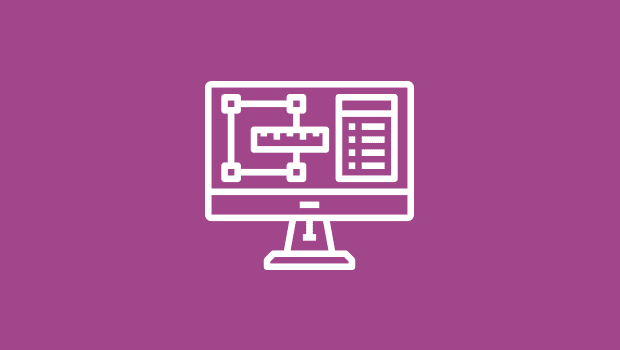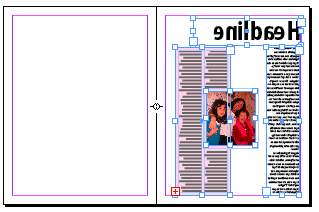How to Mirror a Layout
Flipping a whole layout from a left to a right hand page doesn't have to be a pain. Here are three techniques that can help the process.

You have a bunch of text frames and images on a left-hand page when suddenly, and without warning, your boss storms in and tells you that it all needs to move to a right-hand page. Disaster! (Well, okay, not a “disaster,” but at least it’s pretty annoying.) Here are three methods you might use to get the job done.
Flip with Direct Selection Tool
The inimitable Eugene Tyson sent me an email a week or so ago with a suggestion that started this whole mirror-the-layout thing going in my head. He pointed out that if you select a bunch of objects with the Direct Selection tool and then use the Flip feature in the Control panel (or use any of the other mirroring features) you get a different result than if you had used the Selection tool. Basically, if you use the Selection tool, it mirrors the objects and their contents (images and text). If you use the Direct Selection tool, it flips the paths themselves, but leaves all the content where it is.
So here’s one way to flip a layout:
- Select all the objects with the Direct Selection tool.
- Select the Scale tool, then click once on the spine (the line between the two pages on a spread). That sets the point of transformation (the “Reference Point” to the spine, rather than some part of the selected objects.
- Click the Flip Horizontal button in the Control panel. (Or, just Option/Alt-click in the last step instead of just clicking, which opens the Scale dialog box. Then scale it -100% horizontally and 100% vertically.)
This works great for text frames. Graphics don’t fare quite as well because the image is often left behind on the other spread! Remember that you’ve flipped the frame, but the image got left behind, unmirrored. So, if you have images, try this next option instead:
Flip and Clear Transformations
Here’s what I think is the easiest way to mirror a layout:
1. Select all the objects with the Selection tool.

2. Select the Scale tool, then click once on the spine (the line between the two pages on a spread). That sets the point of transformation (the “Reference Point” to the spine, rather than some part of the selected objects.
3. Click the Flip Horizontal button in the Control panel. Everything is mirrored and backward.

4. Choose Clear Transformations from the Control panel menu (that little flyout menu way off on the right side of the panel).

That’s it! All the content gets “un-mirrored” and looks correct again. Of course, in the image above, you’ll notice that the Headline is now flush left when perhaps you’d want it flush right. I should have used the “Align away from spine” horizontal alignment instead; that way it would have become “right aligned” automatically. Oh well. Next time.
Get a Plug-in
The third method is actually easier, but it’s “harder” because it requires getting a plug-in. The Reflective Objects plug-ins from In-Tools is a better and more “robust” option than doing it manually. And the plug-in isn’t very expensive, thankfully. Brad Walrod reviewed it (and others in the In-Tools family) in a recent InDesign Magazine and we had to fan him off afterward, as he was so excited about how these plug-ins make book production easier.
My feeling is that if you have to flip a page once in a while, one of the first two methods is the way to go. If you make textbooks and you’re flipping layouts all day, the plug-in will pay for itself in no time at all.
This article was last modified on December 19, 2021
This article was first published on December 3, 2008




